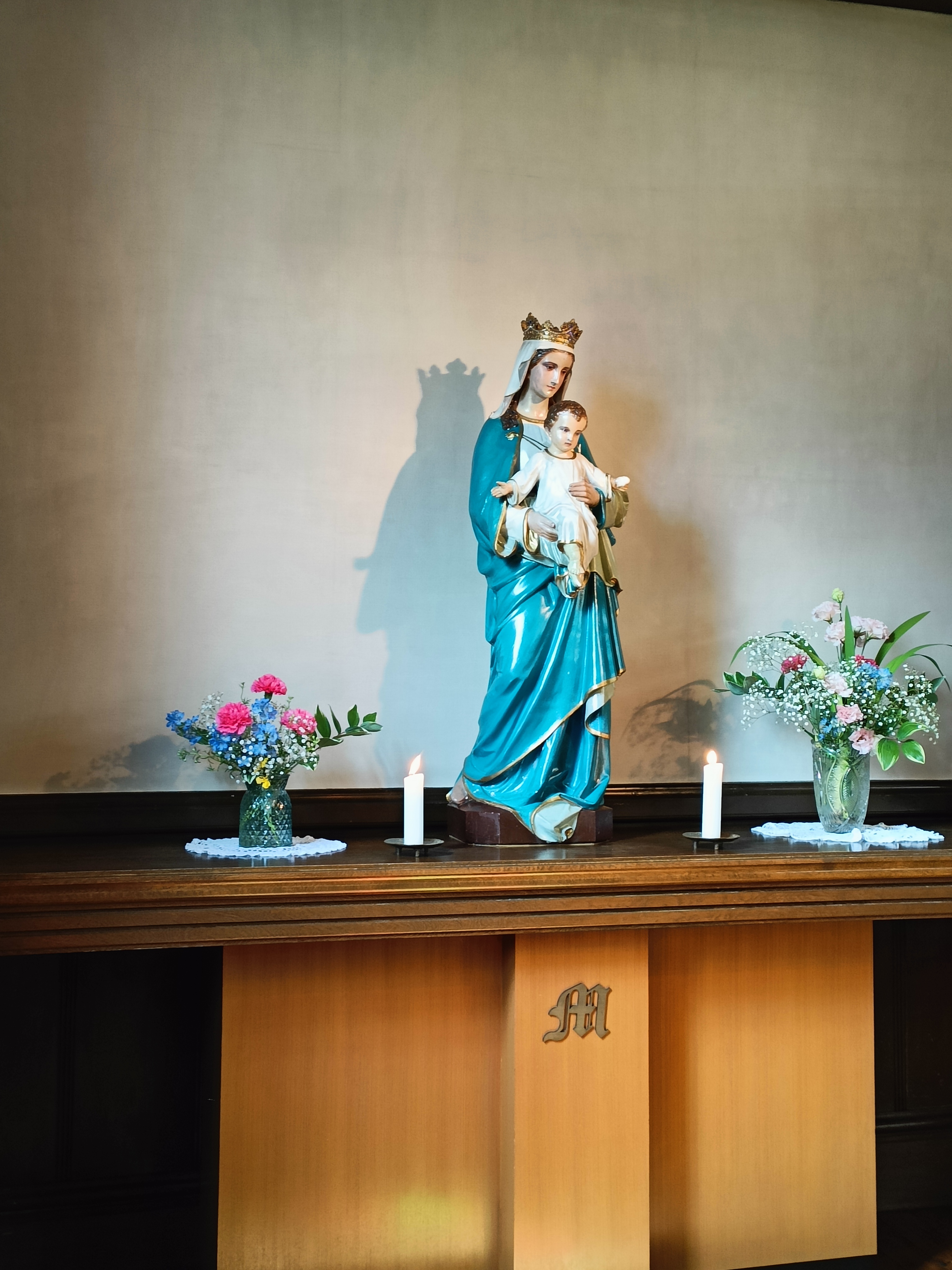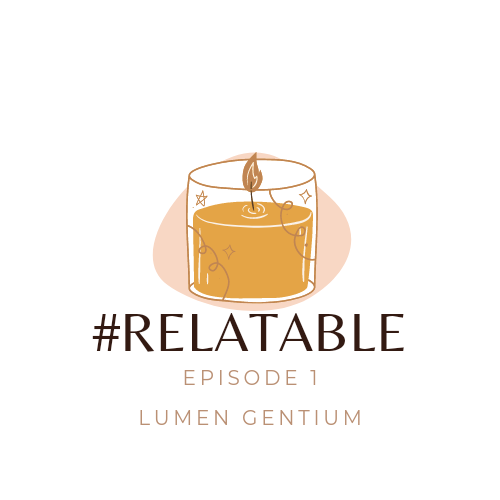#relatable Ep1: Lumen Gentium
- Nicole

- Jun 20, 2021
- 5 min read
Updated: Jul 23, 2021
This is part of a 8-part series where I take a closer look at Vatican documents and distill some gems that you can take with you on your own journey to knowing and loving Him.

We begin our journey into the wisdom of Vatican documents with Lumen Gentium, Latin for "Light of the Nations". In these times of confusion and disarray, the Church emerges to serve an ever more important role and don't feel like you're lacking the knowledge to understand this document. Everyone starts somewhere, and I am here to help you throughout this journey. Be prepared for short soundbites from the podcast, infographics (I couldn't resist) and feel free to message me if you'd like to discuss or delve deeper!
The mystery of the holy Church is manifest in its very foundation. The Lord Jesus set it on its course by preaching the Good News, that is, the coming of the Kingdom of God, which, for centuries, had been promised in the Scriptures: "The time is fulfilled, and the kingdom of God is at hand"
The document references the Dogmatic Constitution of the Church, it sounds inaccessible at first. But stay with me! Dogma means a principle or set of principles laid down by an authority as incontrovertibly true. In effect, Lumen Gentium is an important reminder of the basic essence of our beliefs and sets the cornerstones clearly so we can address the issues of our present age with greater confidence! Knowing what we believe in allows us to venture forth into the unknown with a firm foundation.
I will focus on 3 key areas which touched me deeply and which you may consider for reflection too!
THE LAITY
But the laity, by their very vocation, seek the kingdom of God by engaging in temporal affairs and by ordering them according to the plan of God. They live in the world, that is, in each and in all of the secular professions and occupations. They live in the ordinary circumstances of family and social life, from which the very web of their existence is woven. They are called there by God that by exercising their proper function and led by the spirit of the Gospel they may work for the sanctification of the world from within as a leaven. In this way they may make Christ known to others, especially by the testimony of a life resplendent in faith, hope and charity.
Where the document references the hierarchical nature of the church and the role of the religious, I was particularly intrigued by the reference to the laity, which form a broad majority of the church, likely inclusive of you and me! The interesting point highlighted here is that the church acknowledges our living within the secular world and the concerns that arise because of it. Instead of living a life that is separate from the secular, the laity is encouraged to bring "order" to these daily affairs, of caring for our material needs, fulfilling our roles as members of society to the plan of God. It reminds us that we live within the world, but are not consumed by our own material desires and rely on the work of the Spirit to sanctify our activities such that our lives are a living embodiment of the Gospel virtues. What a challenge this is for the laity, who may think we do not have a role at first to play in the larger story! We actually have a very important role to play in being a testimony to others.
Each individual layman must stand before the world as a witness to the resurrection and life of the Lord Jesus and a symbol of the living God. All the laity as a community and each one according to his ability must nourish the world with spiritual fruits.(212) They must diffuse in the world that spirit which animates the poor, the meek, the peace makers—whom the Lord in the Gospel proclaimed as blessed.(213) In a word, "Christians must be to the world what the soul is to the body."(9*)
2. THE UNIVERSAL CALL TO HOLINESS IN THE CHURCH
The classes and duties of life are many, but holiness is one—that sanctity which is cultivated by all who are moved by the Spirit of God, and who obey the voice of the Father and worship God the Father in spirit and in truth. These people follow the poor Christ, the humble and cross-bearing Christ in order to be worthy of being sharers in His glory. Every person must walk unhesitatingly according to his own personal gifts and duties in the path of living faith, which arouses hope and works through charity.
This ties in beautifully with the next point which is that each and every Catholic is called to holiness and that this is not reserved only for a privileged few. Sainthood is within reach of anyone and everyone, as long as we desire it and seek it wholeheartedly. Holiness is central to our being, our identity as His children and it is borne out out a desire to be obedient and to worship Him through our actions. It also requires letting go of pride to assume the humility of Christ, to choose the lesser rather than the greater, to bear our burdens daily with fortitude and good cheer. I think of all the times when I have complained about the weight of my own burdens and am reminded of the necessity of these challenges as a pathway to sanctification. The journey that we take to sainthood is also varied, we all are bestowed with different gifts and duties and hence there is no "one way" of living out holiness, in fact it is quite unique!
3. THE BLESSED VIRGIN MARY, MOTHER OF GOD
IN THE MYSTERY OF CHRIST AND THE CHURCH
The Virgin Mary, who at the message of the angel received the Word of God in her heart and in her body and gave Life to the world, is acknowledged and honored as being truly the Mother of God and Mother of the Redeemer. Redeemed by reason of the merits of her Son and united to Him by a close and indissoluble tie, she is endowed with the high office and dignity of being the Mother of the Son of God, by which account she is also the beloved daughter of the Father and the temple of the Holy Spirit. Because of this gift of sublime grace she far surpasses all creatures, both in heaven and on earth.
What a beautiful reminder of the role Our Lady plays in the story of salvation! The comparison made between Eve and Mary is particularly poignant for me - The knot of Eve's disobedience was untied by Mary's obedience; what the virgin Eve bound through her unbelief, the Virgin Mary loosened by her faith. We are reminded of Mary's disposition of openness and faith in her Lord and her maternity. She is our mediator and a powerful intercessor and the document references her many titles.
There is much wisdom to be gleaned from the document and I have only just scratched the surface. I attach a simple Infographic I created that summarises some key points that you might find useful too as you read the document in greater detail, and with prayerfulness.

Here is a link to the document in full: https://www.vatican.va/archive/hist_councils/ii_vatican_council/documents/vat-ii_const_19641121_lumen-gentium_en.html
Thank you for coming on this journey with me as we delve deeper into the wisdom of these documents as we start to learn how truly it is #relatable!






Comments